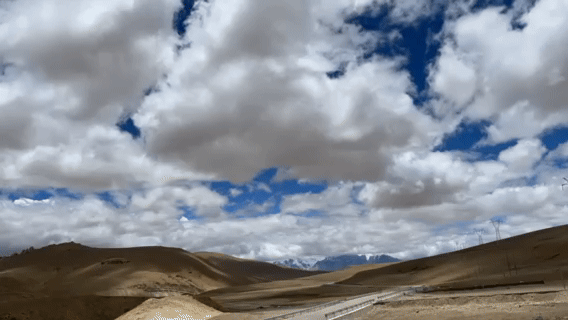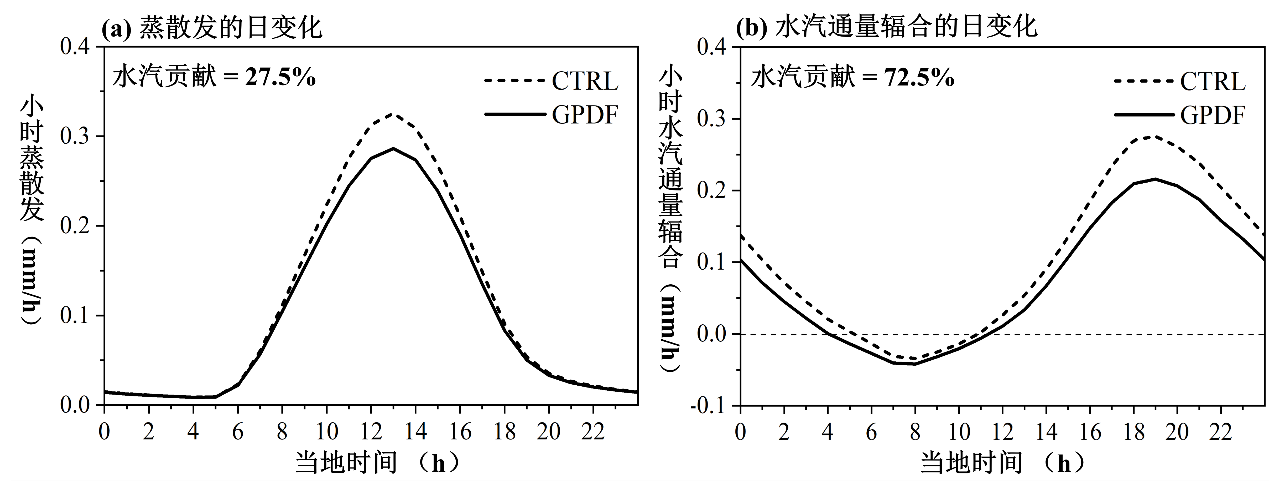The blue skies over the Tibetan Plateau (TP) are crystal clear, expansive, and profoundly captivating, leaving an indelible impression on all who venture there. Upon closer inspection, an intriguing phenomenon comes to light: unique clouds resembling popcorn dot the horizon (Fig. 1). Dubbed "popcorn clouds," these miniature formations owe their existence to robust convective activities characteristic of the TP.
The presence of these small-scale clouds is poised to alter the surface radiation energy balance, yet the precise mechanisms underlying their influence on water cycle processes across various scales within the plateau remain elusive. Prior research has elucidated the physical processes through which small-scale clouds diminish precipitation over the TP, focusing on local land-atmosphere interactions that decrease evapotranspiration (Zhao et al., 2023). Additionally, the surface heating of the TP during summer leads to the formation of a low-pressure center and cyclonic circulation in the lower atmosphere, facilitating the transport of monsoon water vapor from the eastern and southern borders towards the plateau's interior. Consequently, the question arises: can alterations in surface heating induced by small-scale clouds significantly impact large-scale atmospheric circulation and associated moisture convergence, thereby modulating summer precipitation patterns over the TP?

Fig. 1 "Popcorn" clouds over TP in summer
To address this question, Professor Yang Kun from the Department of Earth System Science (DESS), Tsinghua University uses the WRF model including statistical cloud cover and Gaussian probability density function (GPDF) to simulate the climate of the TP in summer of 2018 at resolutions of about 11km and 5km, respectively, finding that the scheme could significantly reduce the summer wet bias at both resolutions. Among them, the simulation of 5km resolution combined with GPDF scheme is the closest to the accumulated precipitation observed in situ (Fig. 2a); Compared with the Xu-Randall cloud cover scheme (CTRL scheme) used by default in the WRF, this scheme increases the simulated cloud water content of 500 hPa and cloud ice content of 300 hPa (Fig. 2b-c), which effectively makes up for the lack of expression of small and medium-scale clouds in the model and significantly mitigates the overestimation of short-wave radiation in most areas of the TP (Fig. 2d).

Fig. 2 (a) Daily accumulated precipitation (mm) in the simulations and observations (OBS) (b) cloud ice mixing ratio (10-6 kg/kg) at 500 hPa, (c) cloud ice mixing ratio (10-6 kg/kg) at 300 hPa, (d) downward shortwave radiation (SWD, W/m2), (GPDF-5km minus CTRL-5km) averaged over all the sites in the TP during the study period in July-August, 2018. Shaded areas in (b-d) indicate that the significance test has been passed (p=0.1).
The above comparative simulations show that the small-scale clouds can significantly reduce the solar radiation on the surface (Fig. 2d), thus weakening the intensity of land-air exchange and the surface evapotranspiration and sensible heat flux (Fig. 3a). On the one hand, it directly reduces the local supply of atmospheric water vapor by the ground, and on the other hand, it inhibits the "heat pump" effect of the TP, resulting in an increase in the potential height of 500 hPa and a weakening of the monsoon circulation around the plateau (Fig. 3b), thus inhibiting the long-distance transportation of water vapor to the TP (Fig. 3c).

Fig. 3 Average (a) surface sensible heat flux (SHF, W/m2), (b) Spatial distribution of average geopotential height (GH, gpm) and moisture flux (g/s · hPa · cm) at 500 hPa in the CTRL-5km case, and (c) their differences (GPDF-5km minus CTRL-5km) (mm/h) over the Tibetan Plateau for July-August in summer. Shaded areas in (a, c) indicate that the significance test has been passed (p=0.1).
It is evident that the presence of small-scale clouds exerts a dual effect on precipitation reduction by diminishing local evapotranspiration and weakening monsoon water vapor transport. To delve into the mechanisms underlying this precipitation reduction, the research team employs the atmospheric water vapor balance equation to dissect the contributions of local and remote water vapor sources. Their findings reveal that the primary reduction in evapotranspiration occurs between 10:00 and 16:00 local time (Fig. 4a). Moreover, the decrease in water vapor flux convergence can occur throughout the day, with this latter factor playing a dominant role in precipitation reduction, accounting for approximately 70% of the total effect (Fig. 4b).

Fig. 4 The diurnal variation of the average (a) evapotranspiration (unit: mm/h) and (b) water vapor flux convergence (unit: mm/h) simulated by the two schemes in the TP in July-August, 2018.
Paper information:
Liu, Jiarui et al. (2024). Cloud radiative feedback to the large-scale atmospheric circulation greatly reduces monsoon-season wet bias over the Tibetan Plateau in climate modeling. Geophysical Research Letters, 51, e2024GL109180. https://doi.org/10.1029/2024GL109180
References:
Zhao, D., Lin, Y., Dong, W., Qin, Y., Chu, W., Yang, K., et al. (2023). Alleviated WRF summer wet bias over the Tibetan Plateau using a new cloud macrophysics scheme. Journal of Advances in Modeling Earth Systems, 15(10), e2023MS003616. https://doi.org/10.1029/2023MS003616
Written by Liu Jiarui and Yang Kun
Edited by Wang Jiayin
Reviewed by Zhang Qiang